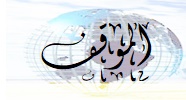Introduction
Normally the Thanksgiving week is a quiet one for the think tank community. However, the Israeli war on Gaza has caused most of the think tanks to provide some analysis. Since the ceasefire was announced Wednesday afternoon, after many offices were closing for the long weekend, none of them addressed the chances of the ceasefire. However, if history is a guide, it means a temporary truce that will be broken sometime in the future.
The Monitor’s analysis looks at the Israeli anti missile system, Iron Dome that has intercepted many missiles being fired from Gaza. The analysis notes that although the system is somewhat effective, it is very expensive and will not offer a long term solution to the Israelis.
Executive Summary
Normally the Thanksgiving week is a quiet one for the think tank community. However, the Israeli war on Gaza has caused most of the think tanks to provide some analysis. Since the ceasefire was announced Wednesday afternoon, after many offices were closing for the long weekend, none of them addressed the chances of the ceasefire. However, if history is a guide, it means a temporary truce that will be broken sometime in the future.
The Monitor’s analysis looks at the Israeli anti missile system, Iron Dome that has intercepted many missiles being fired from Gaza. The analysis notes that although the system is somewhat effective, it is very expensive and will not offer a long term solution to the Israelis.
Think Tanks Activity Summary
The opinions of the think tanks run the gamut. The Carnegie Endowment’s take is, “There is no clear path forward for international diplomacy, but it is quite obvious what does not work: Waiting for Hamas to go away. In a visit to Gaza last May, I saw how thoroughly Hamas has come to dominate politics and society in the tiny but crowded enclave. The movement runs ministries, polices the streets and manages the economy. Gaza residents see no alternative to Hamas, nor are they asked for one, with elections canceled and opposition closely monitored. As the Obama administration moves into its second term, it makes more sense to deal with the Israeli-Palestinian conflict that really exists rather than to pretend that there still is a “peace process” that only needs one more round of quiet talks to succeed.”
The Heritage Foundation has its take on the Gaza incident. They conclude, “ Israel has called up 75,000 reservists and massed armor and at least 30,000 troops along the border, underscoring that it is serious about launching a ground intervention if Hamas continues its indiscriminate bombardment of Israeli civilians. The U.S. needs to stand with Israel against terrorism and support its right to defend itself against a ruthless enemy that hides among Palestinian civilians to launch rockets indiscriminately at Israeli civilians. Hamas routinely uses children as shields. There can be no Israeli–Palestinian peace until Hamas and other Islamists are defeated and discredited.”
The CSIS is pessimistic. They conclude, “And yes, these are grim conclusions. They may argue for new peace efforts in theory, but there is almost no prospect of real efforts in practice. They scarcely argue against cease-fire and negotiating efforts, but they warn that such efforts are likely to buy little more than time as the situation continues to deteriorate. Accordingly, the real world solution may have to be to accept that what is happening in Gaza today will be repeated again and again in the future, that the United States can do little more than encourage Israeli restraint while helping Israel steadily improve its defenses against each new form of asymmetric attack, and continue to do what it can to check Iran and violent Salafi extremism and terrorism. In the real world, the only lasting solutions are the ones neither side will really support or act upon.”
The pro-Israeli think tank Center for Security Policy has its take. They blame Obama’s policy and note, “The prospects for, at a minimum, a terrible regional war are further increased by the last element of the Obama Doctrine: the diminishing of our country. Such an effect is particularly evident with respect to the wrecking operation the administration is pursuing with respect to the U.S. military. At particular risk is our armed forces’ ability to maintain the sort of presence and to project the sort of power that has proven effective in deterring aggression against us, our allies and our interests. Even if President Obama actually meant it when he said “we have Israel ’s back,” he is greatly reducing our ability to honor that commitment. History will, in due course, assign a name to the horrific war now in prospect. For the moment, it seems appropriate to give the dubious credit for helping to catalyze such a nightmare in the same way we have his monstrous health care legacy, by calling it Obamawar.”
The Foreign Policy Research Institute says the roots of the Gaza violence has its roots in Egypt. They note, “The current confrontation between Israel and Hamas has its roots in Egypt . On 5 August, sixteen Egyptian soldiers were killed by militants crossing into Egypt from Gaza … Since the August attacks, Egypt has closed down much of the heavy traffic through the tunnels by bulldozing its end of the throughways. This crackdown on the tunnels, when combined with the ongoing blockade on Gaza , led to rising prices in Gaza and an economy that was grinding to a halt… There are a group of 600 “tunnel millionaires” in Gaza . It may be fair to say that without the tunnels as steady source of independent revenue from which to tax and distribute patronage, Hamas’ power would erode.”
The Washington Institute looks at what is fueling the incident. They note, “ Israel ’s call up of reservists is designed to put more pressure on Hamas to stop the conflict. But should Hamas keep firing rockets at Tel Aviv and Jerusalem , it will cross an Israeli red-line. Bringing life to a standstill in Israel ’s heartland will not be tolerated. The IDF could launch ground forces into Gaza , and Israel ’s war aims could expand — and that could happen sooner rather than later. That is probably the last thing that Hamas’ leaders want. Their hold on power could be shaken. The irony is that Israel and Hamas probably both want to keep this conflict limited. Israel does not need to get caught up in a long bloody conflict in Gaza , with high casualties and growing international pressure on it to stop. Hamas leaders have no desire to lose their grip on power. Logic would argue for the conflict to be brought to an end with some understandings that would prevent it from resuming soon.”
The Brookings Institution was one of the first think tanks to comment on the Israel/Gaza violence. They say, “Israel’s latest campaign in Gaza, which began on Wednesday with the killing of Hamas’ military commander, Ahmed Jabari, and air strikes on the group’s long-range rocket launchers, is a gamble—and one that Israel might lose. Its goal is to compel Hamas to stop shooting rockets into Israel from the Gaza Strip and to crack down on other groups who are also doing so. Hamas, however, will find it hard to bend to Israeli pressure. In turn, it will be up to outside states, particularly Egypt , to foster a deal to end the fighting.”
ANALYSIS
Israel’s Iron Dome Failed the Test
This week the Israeli Iron Dome missile system has been put to the test as hundreds of missiles have been fired at Israeli settlements from Gaza. According to the IDF, the system has operated with few failures. Iron Dome has shown about an 85% success rate in stopping rockets deemed to pose a threat to life or property, Israeli officials claimed. The system is widely credited in Israel with having minimized casualties. Israeli Defense Minister Ehud Barak gushed this week about what he termed the “unprecedented” success of the anti-rocket system during a ceremony marking the installation of a fifth Iron Dome battery, this one in the Tel Aviv area. Within several years, Barak said, Israel plans “to cover the whole country, all around, against a much wider range of threats.”
There have been problems though. An Iron Dome malfunction probably contributed to a rocket strike on an apartment complex in the town of Kiryat Malachi . Three people died in the attack, the most significant Israeli casualties of the war. Israeli press reports indicate that the Iron Dome installation in Kiryat Malachi suffered a communications problem.
There is also the cost. As it currently stands, it costs about $40,000 to $100,000 to fire one Iron Dome missile to stop one Palestinian missile that costs a few hundred dollars. Consequently, the cost of stopping the current barrage is running into the millions of dollars.
Iron Dome is just one missile-defense system used by Israel that are designed to block rockets with different ranges held in the arsenals of Iran, Hamas, and Hezbollah. Iron Dome, manufactured by Israel ’s Rafael Advanced Defense Systems, is designed to stop short-range missiles. The Arrow missile system—developed after the 1991 Gulf War, when Iraq hit Tel Aviv with Scud missiles—was designed to intercept Iran ’s long-range Shihab missiles. David’s Sling, which is still in development, is designed to stop intermediate range missiles.
Iron Dome is a mobile air defense system was developed by Rafael Advanced Defense Systems to intercept and destroy short-range rockets and 155mm artillery shells fired from distances of 4 to 70 kilometers away whose trajectory would take them to a populated area. It is designed to ignore missiles headed into unpopulated areas. It is based on Rafael’s Spyder missile system.
Iron Dome has three central components: the Detection & Tracking Radar, the Battle Management & Weapon Control (BMC), and Missile Firing Unit. The interceptor missile is equipped with electro-optic sensors and several steering fins for high maneuverability.
One flaw of the Iron Dome system that the Palestinians are exploiting is the small range each battery covers. Israel needs a total of 20 batteries to provide adequate defense for its borders with Gaza and Lebanon – which it doesn’t have.
Palestinians changed their rocket-launch tactics in an attempt to evade the Iron Dome batteries deployed in southern Israel. This included aiming more frequently at areas beyond the Iron Dome protection range. When they do aim at protected areas, they do not fire one or two rockets, as in the past, but rather a volley of seven rockets almost simultaneously. Iron Dome may intercept several of the successfully, but the chances of one leaking through the system is greater.
Some analysts suggested that the success of the anti-missile system may have made it less likely for the IDF to invade Gaza in order to destroy the missile launching areas. Republican senator John McCain said in an interview with CBS that “If it hadn’t been for Iron Dome, the Israelis would be in Gaza right now,” referring to a ground invasion into the Gaza Strip.
But the course of events leading to the cease fire suggests another more realistic reason, like fearing a protracted war where the Israeli troops will suffer heavy casualties.
Although the Iron Dome anti-missile system has clearly prevented many missiles from hitting populated areas of Israel, there remains a question about how much of a “game changer” it is.
The first problem is the cost to intercept a cheap Palestinian missile. The cost to replace the Iron Dome missiles being used is higher than the $40,000 apiece that they cost in 2010. We do not know how many missiles have been used, but even if only one was used to intercept and destroy each of the 350 missiles Israel has claimed it has shot down, Israel has possibly incurred a cost of $37 million in the last few days to replace the missiles. This is a cost that is above the cost of mobilizing the Israeli reserves. Since the Palestinian missiles are using missiles that only cost hundreds of dollars, they could engage in a fiscal war of attrition with Israel and win. In three months of this level of attacks, Israel ’s costs to replace the Iron dome missiles could be over $1 billion.
The second problem is that Iron Dome is designed to intercept a narrow range of projectiles, which have slower speeds. Higher speed missiles launched from Gaza would be much more difficult to intercept.
The third problem is the small envelope of protection (about 150 sq. kilometers per battery). This isn’t enough to even protect the single city of Be’er Sheva . This means producing a large number of Iron Dome batteries at a cost that can only be paid with American financial assistance. The only other option is to limit the protection to some parts of Israel , which leaves other areas vulnerable. Since Iron Dome is as much a political defense system as it is an anti-missile defense system, Israeli politicians have to pay attention to the voters who also want this protection – not just those who need it.
This means the status quo cannot continue and any cease fire is likely to be temporary.
Iron Dome may offer some protection to Israel’s citizens, but at a high price. Not only is Israel spending a lot of money to replace their Iron Dome missiles, they are currently using them faster than they can be replaced. Their human cost is minimal, but the cost of continuing with missiles threat is very heavy.
Although the Iron Dome displayed some technological success, it isn’t the game changer that many imagine. It can stop some rocket attacks, but not forever.
PUBLICATIONS
The Escalating Conflict Between Hamas and Israel
By James Phillips
Heritage Foundation
November 19, 2012
Commentary
Over the last four days, militants in Gaza have fired more than 840 rockets at Israel. Hamas rockets have reached the outskirts of Jerusalem and Tel Aviv for the first time, thanks to the smuggling of Iranian rockets into Gaza . The increasing range and sophistication of Palestinian rockets has expanded the reach of terrorists, who now can threaten up to half of Israel ’s population. Israel has intercepted 302 of those rockets with its Iron Dome missile defense system, according to the Israel Defense Forces. Iron Dome, on which the U.S. has collaborated, has proven its worth and underscored the importance of missile defense in future U.S. military budgets. Meanwhile, Iran is seeking—successfully—to keep the pot boiling at Israel ’s expense to distract international attention from its nuclear program. A leaked International Atomic Energy Agency report indicates that Iran could soon double the number of centrifuges at its Fordo facility from 700 to 1,400.
Read more
The Fighting in Gaza : Just “Round Two” in an Endless Series of Future Clashes and Battles?
By Anthony Cordesman
Center for Strategic and International Studies
November 20, 2012
The rights and wrongs that have led to the current crisis between Israelis and Palestinians in Gaza are scarcely irrelevant, but almost all of the different arguments on each side have only one outcome. They all help lead to a degree of strategic paralysis that ensures no stable solution is possible to the crisis, that future tensions will rise, that Palestinians will suffer more because they are weak, and that Israelis will not become more secure simply because they are strong. At best, a cease-fire will not offer anyone in Gaza a real future or stop some new form of asymmetric attack on Israel . The only question is how long a pause will last and when the new attacks will come. A land invasion and air strike might or might not buy more time. Only a lasting Israeli ground occupation, however, could provide a reasonable prospect of stopping future rocket attacks on Israel as long as the occupation lasted. Such an occupation, however, would inevitably lead to attacks on Israel Defense Forces (IDF) targets in Gaza , a new internal cycle of violence, and eventual Israeli withdrawal.
Read more
Message of Gaza Violence: Hamas Can’t be Ignored
By Nathan Brown
Carnegie Endowment
November 17, 2012
The outbreak of violence between Israel and the Hamas-controlled “statelet” of Gaza serves no end. Both sides know that, yet they plunge ahead anyway, claiming that they are forced by their adversary to escalate the conflict. Most experts agree that eventually the fighting will stop and leave the situation unchanged. The only question is the number of victims. If neither side has much to gain, why can’t they stop themselves? Each side suspects the other of playing domestic politics. Palestinians fear that the Israeli government is making war with an eye to upcoming elections. Israelis suspect that Hamas — whose full name is the “Islamic Resistance Movement” — is lobbing rockets because it is tired of its rivals’ taunting that it is not living up to its middle name. There is some truth to these charges, but the deeper motivations have to do less with pleasing the home crowd and more with frightening and deterring the other side.
Read more
Obamawar
By Frank Gaffney
Center for Security Policy
November 19, 2012
While debating Mitt Romney this fall, Barack Obama declared that he had decided to embrace the term “Obamacare” - a name originally coined and to that point only used by its detractors to tie the president firmly to the health care fiasco he had spawned. Perhaps he will, therefore, not object if we dub the escalating conflict in the Middle East by a similarly apt name: Obamawar. After all, frantic efforts underway at the moment by assorted diplomats aimed at containing hostilities between Israel and the terrorist enclave known as the Gaza Strip (primarily by blocking Israel’s decisive retaliation) cannot obscure a dismal reality: The crescendo of rockets and missiles unleashed by the Palestinians on Israeli civilians are a predictable repercussion of President Obama’s reckless defense and foreign policies. Consider how such attacks - and the danger to Israel and to us that is growing by day - have been aided and abetted by an Obama Doctrine that can be described in nine words: Embolden our enemies; undermine our friends; diminish our country.
Read more
Israel, Hamas, and “the Egypt We Were Waiting For”
By Brandon Friedman
Foreign Policy Research Institute
November 2012
E Note
The current confrontation between Israel and Hamas has its roots in Egypt. On 5 August, sixteen Egyptian soldiers were killed by militants crossing into Egypt from Gaza . During the attack the militants seized two Egyptian Armored Personnel Carriers and attempted to attack Israeli forces at the Kerem Shalom crossing. Hamas, which is an ideological offshoot of Egypt ’s Muslim Brotherhood, temporarily shut down access to the tunnels connecting Gaza with Egypt . The tunnels had been used to bring its construction (and military) materials into Gaza . Since the August attacks, Egypt has closed down much of the heavy traffic through the tunnels by bulldozing its end of the throughways.[1] This crackdown on the tunnels, when combined with the ongoing blockade on Gaza , led to rising prices in Gaza and an economy that was grinding to a halt.
Read more
The Fuel for the Flames
By Dennis Ross
Washington Institute
November 18, 2012
As I sit here in Jerusalem and watch not just a war of words but also exchanges of rockets and air strikes between Israel and Hamas, it feels as if we are at one of those hinge points in the Middle East. The Arab Awakening has initiated changes without transformation. It has produced new governments, principally Islamist-led, but no certainty about how the region will ultimately evolve. Will these new governments be driven by their ideological beliefs and aspirations that are inherently anti-western and anti-Israel? Or will they rationalize that long-term Islamist aims can and must wait in order for them to act in a way that will be necessary to improve their economies, lest they lose the legitimacy they may currently have with their publics — publics that now have an expectation that their needs and hopes should count for something? Nowhere are these questions more likely to be put to the test than in Egypt today, particularly with the events in Gaza . Hamas is quite literally an outgrowth of the Muslim Brotherhood in Egypt . They are not just sister parties, they are organically linked.


 RLS
RLS



